I can’t explain. It’s just me, it’s something inside me. – Temple Drake
Some films are challenging to watch. Among the most challenging recently is 1933’s The Story of Temple Drake, a film that’s often cited along with the lost Convention City as one of the key reasons for the Code coming to be in the first place.
Based on William Faulkner’s racy novel “Sanctuary,” Temple Drake had (even then) some definitive tap dancing to do in bringing the story to the screen. For starters, the work on which it’s based couldn’t even be mentioned in the credits.
So what’s the deal with Temple Drake? How much time do you have?
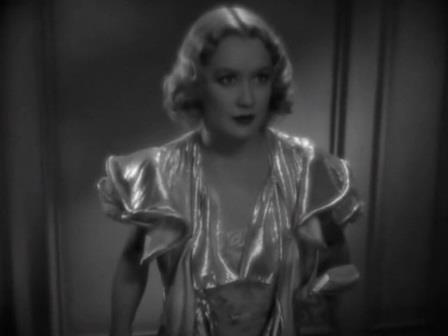 Temple, played in an outstanding (perhaps her best) performance by Miriam Hopkins, lives in a random Southern town and is part of the lineage of a proud and distinguished family. Her grandfather is currently a well respected judge in town. She’s a tremendous party girl and flirt, with most all of the local bucks knowing that she’s all talk. Her grandfather is clueless as to her carousing, but his standing in the community gets her out of lots of trouble. In spite of this, she’s still being courted persistently by local defense attorney Stephen Benbow (William Gargan).
Temple, played in an outstanding (perhaps her best) performance by Miriam Hopkins, lives in a random Southern town and is part of the lineage of a proud and distinguished family. Her grandfather is currently a well respected judge in town. She’s a tremendous party girl and flirt, with most all of the local bucks knowing that she’s all talk. Her grandfather is clueless as to her carousing, but his standing in the community gets her out of lots of trouble. In spite of this, she’s still being courted persistently by local defense attorney Stephen Benbow (William Gargan).
After rejecting yet another of Benbow’s marriage proposals, Temple runs off on a date with highly inebriated Toddy Gowan, who promptly gets into a car accident, though neither he or Temple is hurt. The rush to a decrepit mansion as a thunderstorm breaks out (as it must in any Southern Gothic film), only to find it filled with bootleggers.
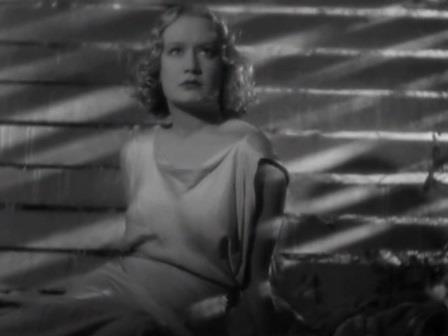 After fending out passes (and outright propositions) Temple, perhaps knowing that she’s finally in over her head, finds refuge in a corn crib for the night. A city gangster named Trigger (Jack La Rue) finds her, kills Tommy, the country boy guarding her, and then proceeds to rape her. He then takes her (or does he?) to town and sets her up in a brothel as a working girl.
After fending out passes (and outright propositions) Temple, perhaps knowing that she’s finally in over her head, finds refuge in a corn crib for the night. A city gangster named Trigger (Jack La Rue) finds her, kills Tommy, the country boy guarding her, and then proceeds to rape her. He then takes her (or does he?) to town and sets her up in a brothel as a working girl.
Things then go from bad to worse, but we’ll stop the spoilers there with the simple conclusion that she ultimately leaves Trigger and returns to her hometown to face her family and the trial for Tommy’s death. Ironically Benbow, her spurned beaux, is handling the defense.
There’s more than a little violence throughout The Story of Temple Drake, and enough suggested sex to drive censors mad. There is so much salacious content that it almost becomes a hindrance to the movie itself, as everything has to be hinted at rather than shown explicitly. Audiences of the time surely pieced much of this together through familiarity with the original source material. For the viewer not intimately familiar with the book (which I am not), it’s both a bit rewarding and challenging with all the inferences needed. It’s rewarding in that some of the most assuredly graphic scenes are thereby avoided but challenging as you’re not exactly sure of what’s going on or Temple’s motivations.
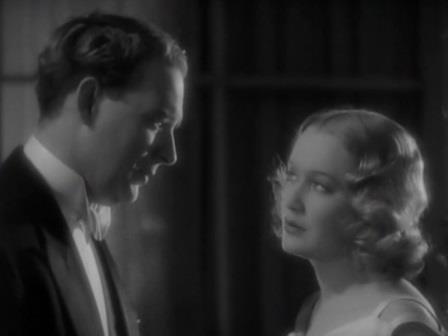 And that’s the films main drawback, if there is one. Though much is fairly easy to discern, we don’t see a rape even indirectly, just hearing a scream as the screen fades to black. Did Temple go willingly with Trigger after the rape or is he basically kidnapping her? Is he really setting her up as a brothel employee? Even with her redemption late in the film, were there consequences for her behavior or not?
And that’s the films main drawback, if there is one. Though much is fairly easy to discern, we don’t see a rape even indirectly, just hearing a scream as the screen fades to black. Did Temple go willingly with Trigger after the rape or is he basically kidnapping her? Is he really setting her up as a brothel employee? Even with her redemption late in the film, were there consequences for her behavior or not?
All said though, The Story of Temple Drake is a powerful film and has to really be looked at as a character study of Temple herself. Though I’m not one to be overly impressed with put on accents, Miriam Hopkins does a good job with her own drawl, adding to an already incredibly effective portrayal here. What we don’t see here is her penchant for over-acting and scene stealing and it’s a performance deserving of an Academy nomination, though that was not forthcoming. Surely the rather scandalous nature of the role and the short time the film was in market had something to do with this. The film was deemed so controversial that it was banned in several states and mostly pulled from distribution after a few weeks, not to reappear until the mid 1950s. It’s still a very hard film to find today.
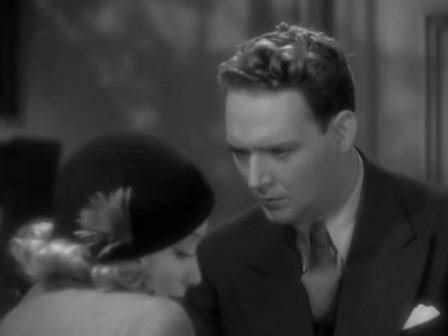 The balance of the main cast is good to the extent they are required. William Gargan’s portrayal of beaux and attorney Stephen Benbow is as boring as his character until the final act, when to his credit he does take it to an entirely different level. It’s little wonder that Temple wouldn’t want to marry him in favor of keeping up her partying lifestyle.
The balance of the main cast is good to the extent they are required. William Gargan’s portrayal of beaux and attorney Stephen Benbow is as boring as his character until the final act, when to his credit he does take it to an entirely different level. It’s little wonder that Temple wouldn’t want to marry him in favor of keeping up her partying lifestyle.
Jack La Rue is also good as the thug Trigger, though honestly all he has to do here is sneer while holding a cigarette in his mouth. It’s little wonder given the character that George Raft reportedly refused to play the role.
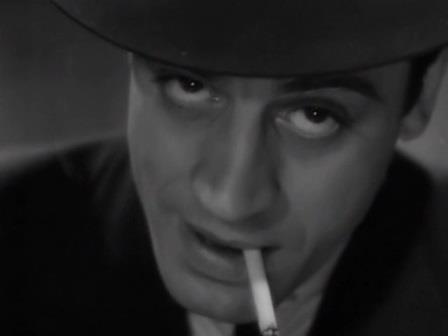 There’s a lot of little things here to enjoy too. The lighting of the picture changes throughout, being bright and cherry during Temple’s ‘harmless’ flirting period prior to the car crash and resulting escapades. Between the car crash and her departure from Trigger the film is dark and overwhelmed by deep and gloomy shadows. Only towards the end, during the effective trial portion of the film does the lighting brighten up the proceedings, through its only slightly. There’s also a ton of dirt (ton is a technical word) and grim between the Temple’s run-in with the bootleggers and (again) leaving Trigger. Even though mere black and white, this piece of the film almost seethes filth.
There’s a lot of little things here to enjoy too. The lighting of the picture changes throughout, being bright and cherry during Temple’s ‘harmless’ flirting period prior to the car crash and resulting escapades. Between the car crash and her departure from Trigger the film is dark and overwhelmed by deep and gloomy shadows. Only towards the end, during the effective trial portion of the film does the lighting brighten up the proceedings, through its only slightly. There’s also a ton of dirt (ton is a technical word) and grim between the Temple’s run-in with the bootleggers and (again) leaving Trigger. Even though mere black and white, this piece of the film almost seethes filth.
There’s a similar transition in the musical score, as we are presented with an oddball standard symphonic score for the bulk of the picture, but during Temple’s time with Trigger we are presented with a jangly piano led theme, almost resembling what could be termed honky tonk. This is also a big tell (in addition to the wardrobe and the older lady running the house) that Temple’s room with Trigger is actually nothing more than a brothel.
If you’re fortunate enough to find The Story of Temple Drake, you are not likely to be disappointed.
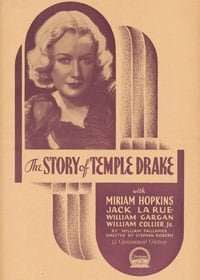
Seems to me that Trigger in the book was Popeye, Not having the requisite genitalia he improvised and raped Temple/Leda with a handy corncob. Temple was quite at home in a Dixie bordello and its Madam but Faulkner seems to be playing around with other classic Myth Themes:Leda and the Swan for starters. Anyone want to guess who was the Sugar Daddy backing this traipse through the steamy bayou?
I’ve always wanted to see this film, as I love pre-code Hollywood films, especially ones that feature strong women. I heard this film was pretty revolutionary for its time in how it depicted the rape (not graphically, of course but racy for the 1930’s). I’ve always loved Miriam Hopkins. I actually love her more in her later career when she played supportive characters who were much more ambivalent and complex (like the aunts in “The Heiress” and “The Children’s Hour”.
Tam May
The Dream Book Blog
https://thedreambookblog.wordpress.com
In the novel sanctuary, temple is kidnapped by a gangster named Popeye. Because he is impotent impotent he rapes her with a corncob
Bryce suderow
FYI: “The Story of Temple Drake” is streaming on Amazon Prime Video, free for Amazon Prime members.